We may earn income from links in this post. Please read this Disclosure for details.
This easy salpicón de mariscos (seafood salad) appetizer is made with a combination of fresh seafood, crisp bell peppers, cucumber, slivers of onion and the BEST lime vinaigrette!
It’s delicious to serve at tapas parties, summer potlucks or as a light lunch.
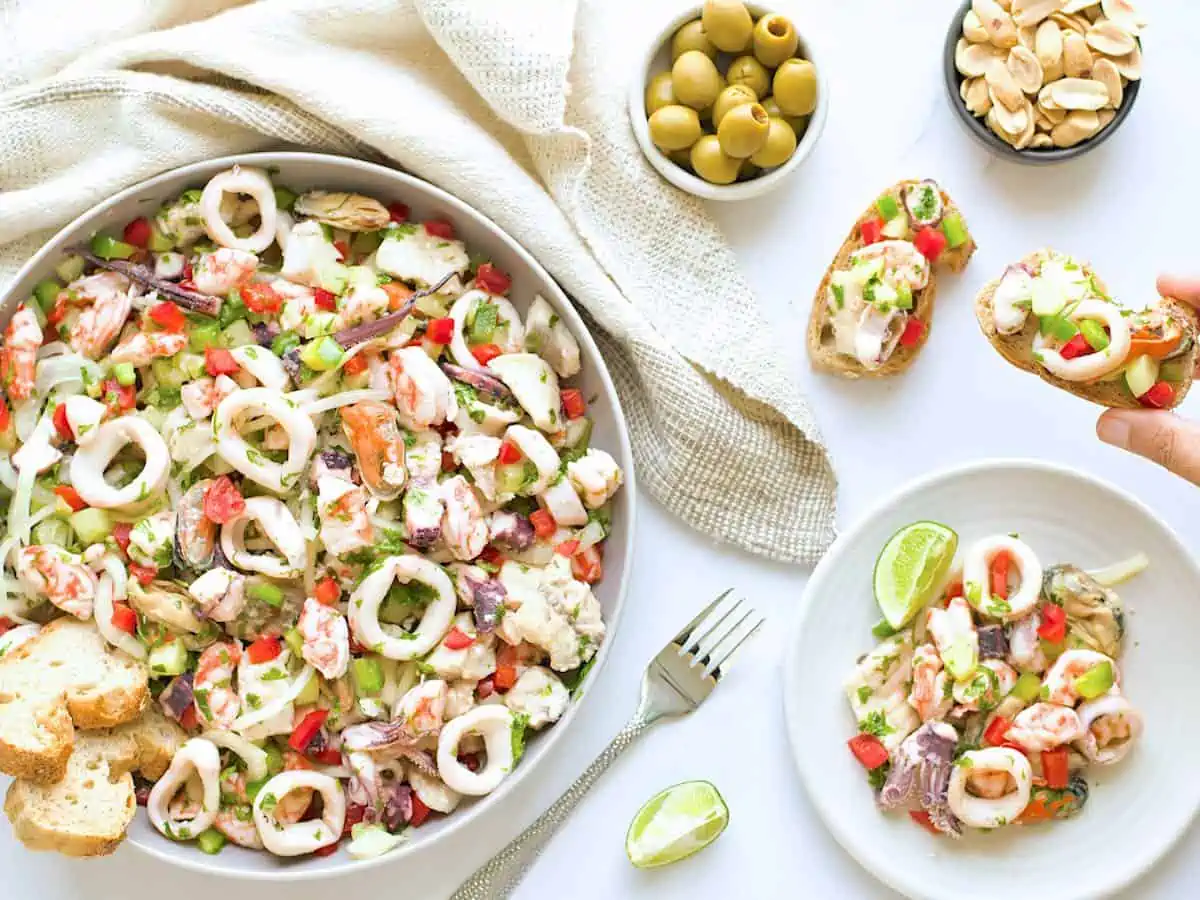
Jump to:
Why We Love This Seafood Appetizer
- This classic Spanish tapa is meant to be enjoyed in just a few bites. The refreshing mix of fresh seafood makes it a very popular party food in Latin and South America.
- It’s very versatile! Use your fave seafood or a combination of scallops, lobster, squid or even faux fish.
- Super easy to make, it offers incredible flavour with little effort! Because it can be made ahead and is served cold, it’s perfect for entertaining.
- The vinagreta (dressing) is sharpened with naranja agria (bitter orange) and lime rather than vinegar so has tons of flavour but isn’t acidic.
- Unlike Latin American ceviche or Tahitian poisson cru, the seafood in salpicón is cooked before being marinated. This makes it great if you love seafood but are nervous about eating it raw.
- The delicate flavour of the seafood, vibrant dressing and crisp fresh veggies makes this dish ideal for summer potlucks or boating trips.
What is Salpicón de Mariscos?
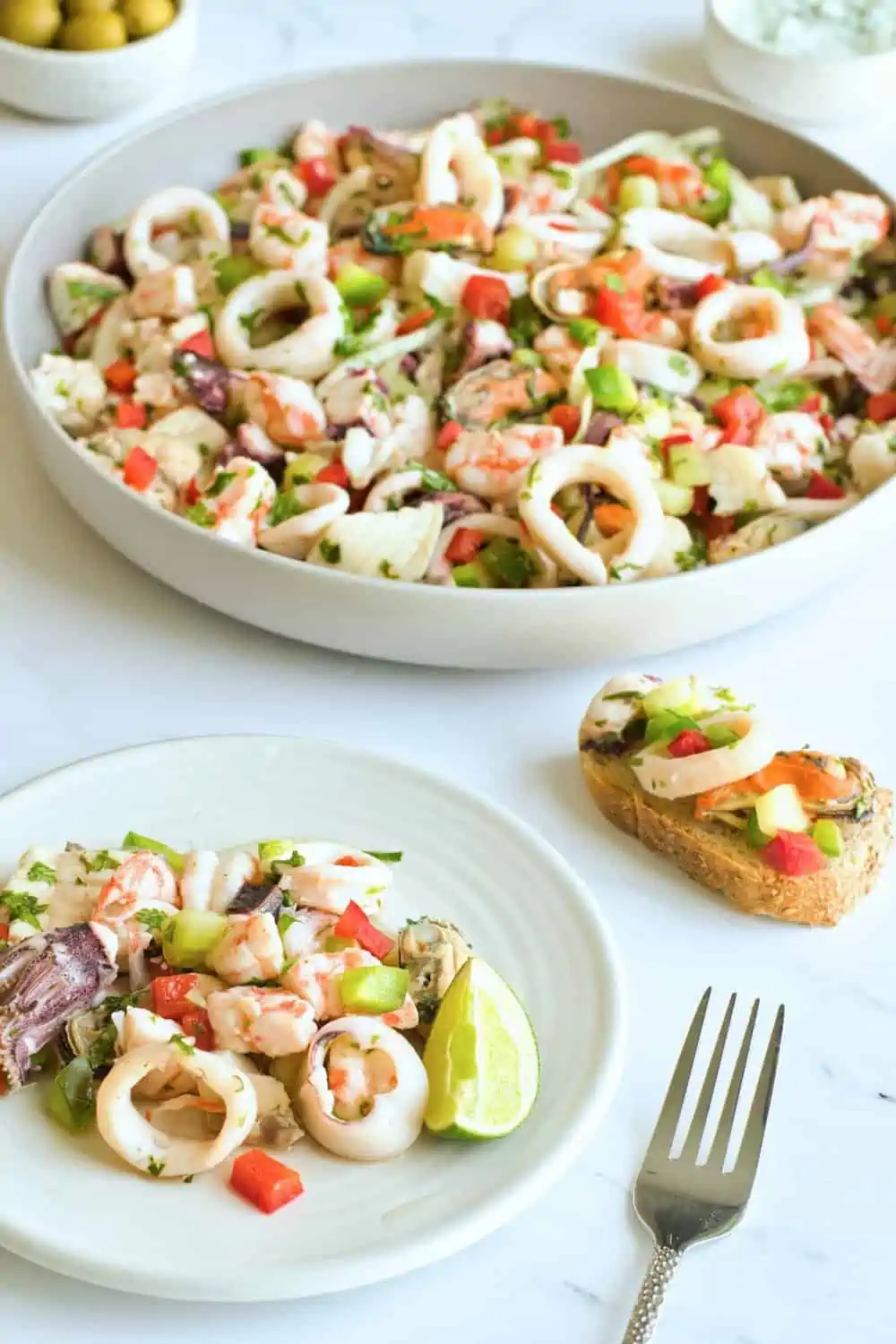
Salpicón is a technique of finely chopping cooked ingredients before mixing them with a vinaigrette. The name salpicón actually comes from the Spanish verb salpicar which means “to sprinkle” and describes chopping ingredients finely.
Salpicon de mariscos is a specialty of several fishing communities in Spain. I first came across it in Galicia where the dish often featured glistening pulpo (octopus) plucked fresh from the waters off the coast’s rocky shores.
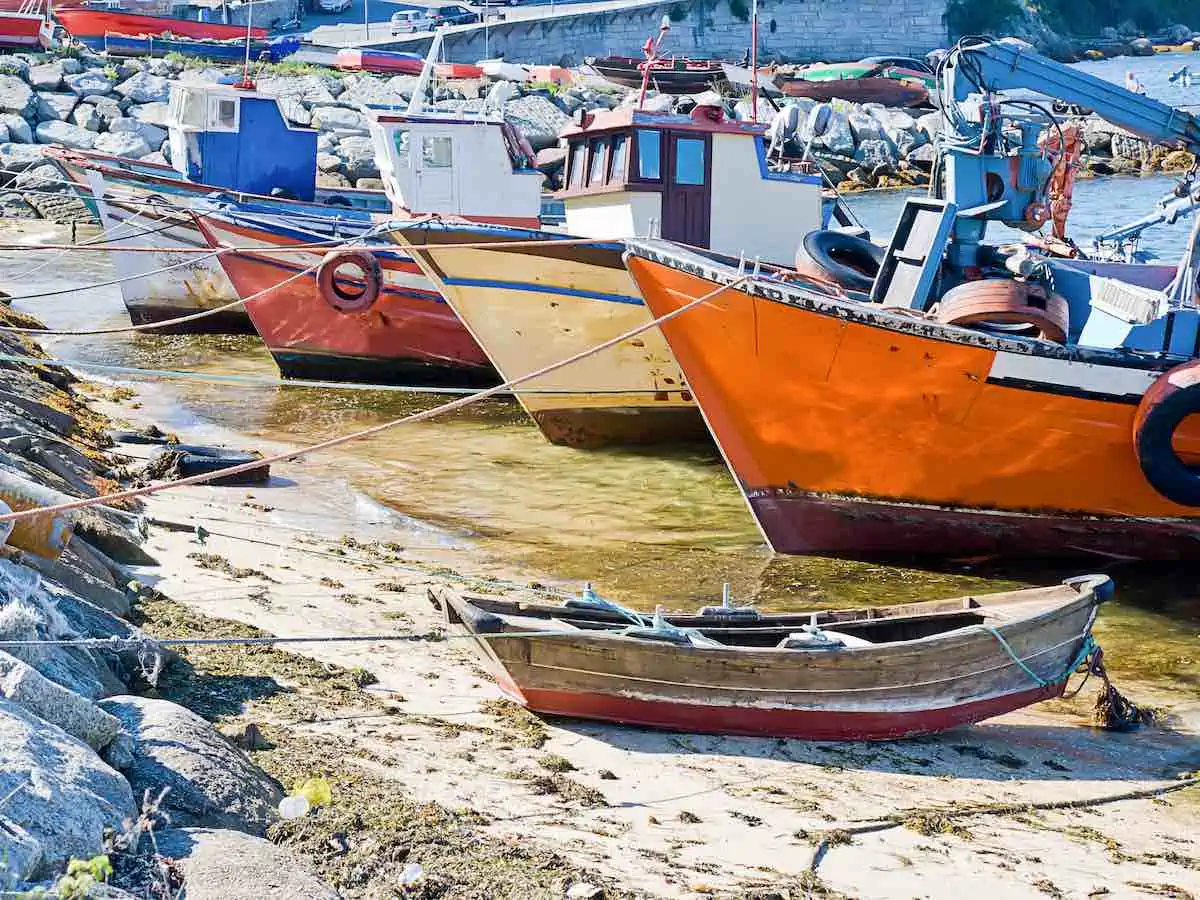
It’s also popular in Valencia and Andalusia where the culinary technique of marinating meat in vinegar has its roots in Arabic cuisine.
The Old World method of preserving food by pickling originated prior to the invention of refrigeration.
Combining a protein (seafood, chicken or beef) with vegetables, herbs and spices in a tart, pickled sauce not only helped preserve a food but added a boost of flavour.
The Moors ruled much of Spain for 800 years and their influence migrated to Spain’s colonies.
That’s why today you’ll find salpicón de mariscos (and other marinated dishes) in the traditional cuisines of Latin America, the Philippines and Caribbean.
What are the Main Types of Salpicón?
While all versions of salpicón are popular dishes to serve when entertaining there are different types of meat you can use. They’re all delicious!
Salpicón de Res (Beef): Is usually made with the beef leftover from caldo de res and includes tomatoes, mint and radishes.
Salpicón de Pollo (Chicken): This shredded chicken combo is often topped with crema and avocado and served over tostadas.
Salpicon de Mariscos (Seafood): Usually served in tapas-sized portions in small dishes or glasses. The ingredients are sourced fresh and are expensive so it’s more of a special occasion dish.
This recipe for Salpicón de Mariscos reflects how it’s traditionally prepared in Latin America especially Guatemala, the Yucatan of Mexico, Puerto Rico and the Dominican Republic.
Versions from Spain often include paprika while Venezuelan salpicón often contains ketchup, salsa inglesa (Worcestershire sauce) and Maggi seasoning.
I prefer this Latin American version as the simple vinagreta allows the exquisite sweet flavours of fresh seafood to shine.
Ingredients
Here are the highlights of this recipe. You’ll find the full ingredient list and quantities in the recipe card (please scroll down).
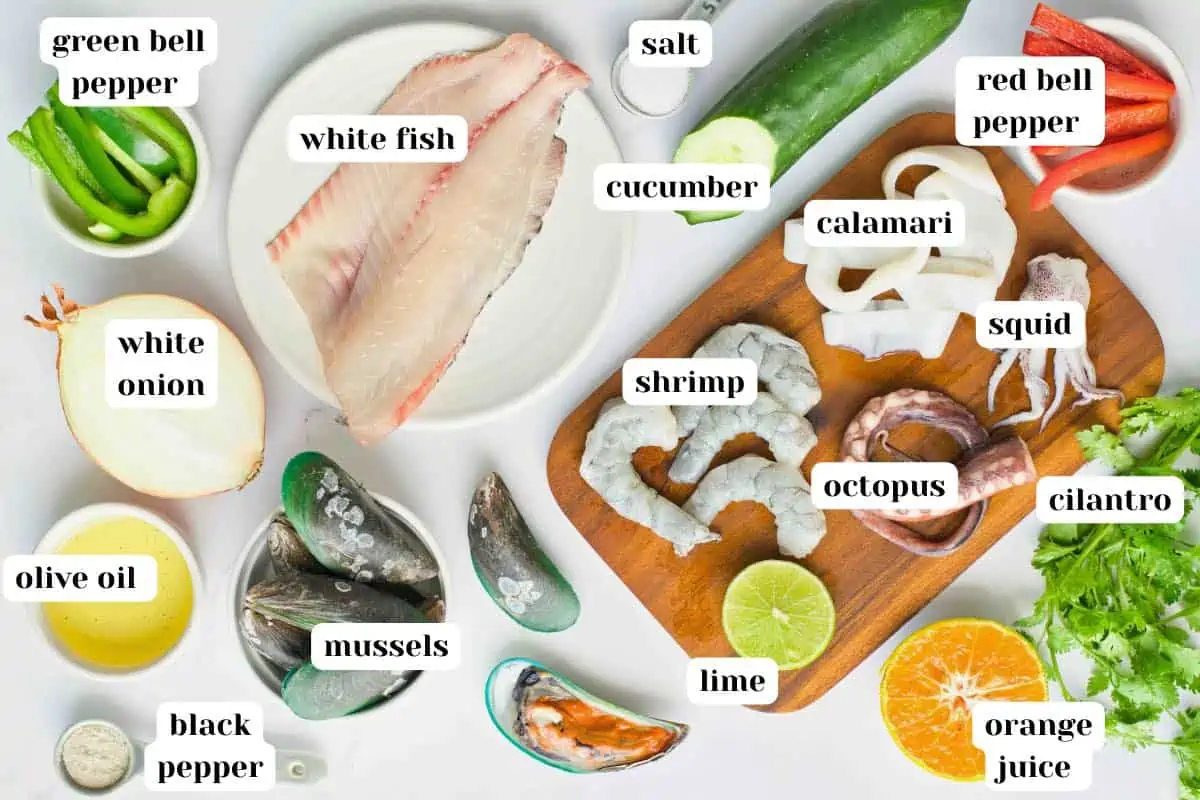
- Fresh Shellfish: Look for the freshest seafood available. Aim for a combination of colour and textures. Scallops, lobster, squid, mussels, shrimp and crab are most popular. Clean and rinse the seafood. Trim the “beards” off the mussels and discard any shellfish that has opened.
- Fresh Fish: Use a firm, white fish such as halibut for the best texture and flavour. Select filets with white flesh rather than yellow. Remove any visible bones.
- Veggies and aromatics: Onion, cucumbers and bell peppers add contrast and make the recipe stretch further. You can substitute fresh parsley for cilantro.
- Naranja Agria: Bitter orange grows in Spain as well as Mexico and Latin America. It has a vibrant, citrusy, slightly bitter taste. You can find bottled naranja agria juice in specialty Mexican food stores or online. Goya Foods is the brand I use most often. You can substitute grapefruit and orange juice in equal parts for fresh or bottled naranja agria.
How to Make Seafood Salpicón
This is a very easy salpicón recipe. But there are a few tips that will make it taste extra special, so let’s go through the recipe step by step.
- Peel and slice the onion very thinly. Divide the sliced onion into two portions.
- Submerge one half of the sliced onions into a bowl of ice water.
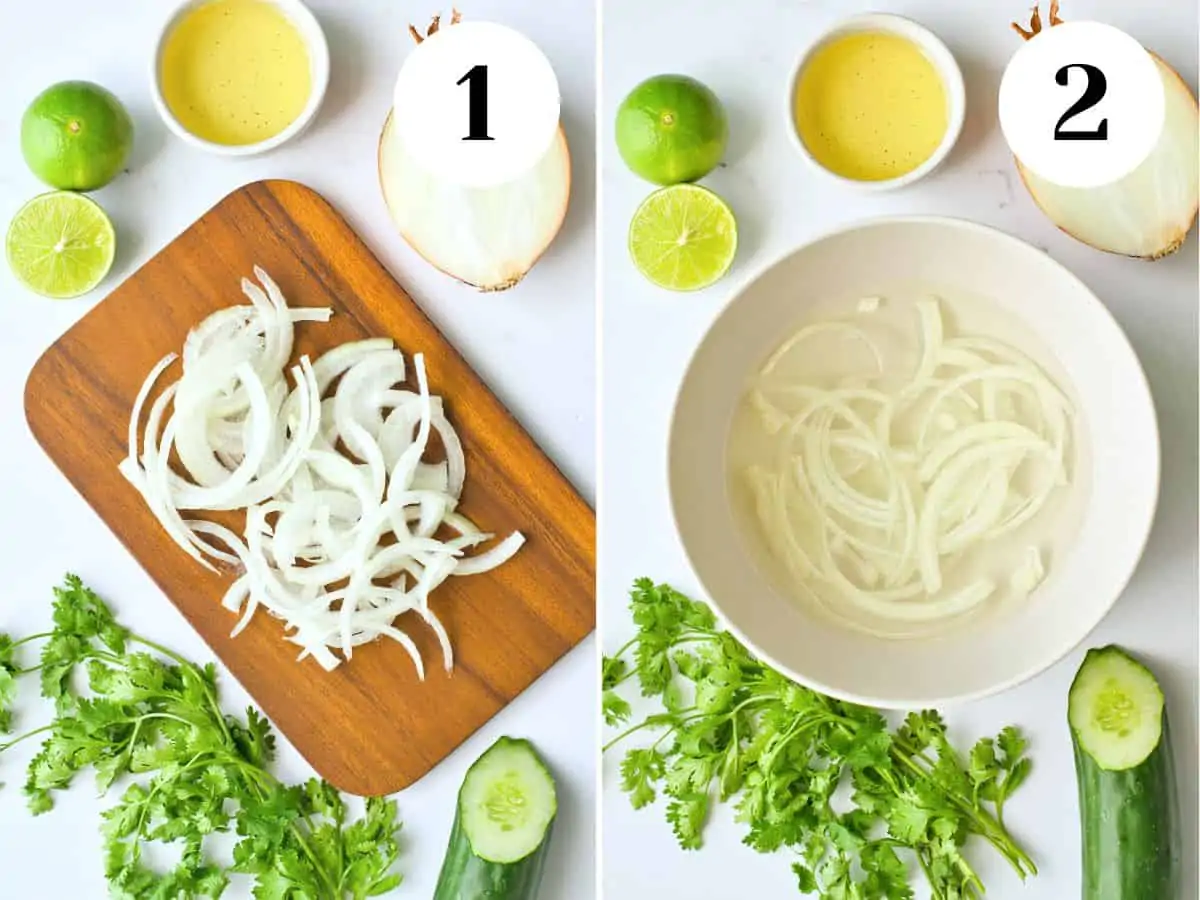
- Place two cups of water in a skillet and heat to boiling. Add one third of the remaining sliced onions and 1/8 teaspoon salt to the water.
- Add the fish filet to the skillet, reduce heat and poach for 3-5 minutes until done. Once the fish is cooked, remove it with a slotted spoon, drain and cool at room temperature.
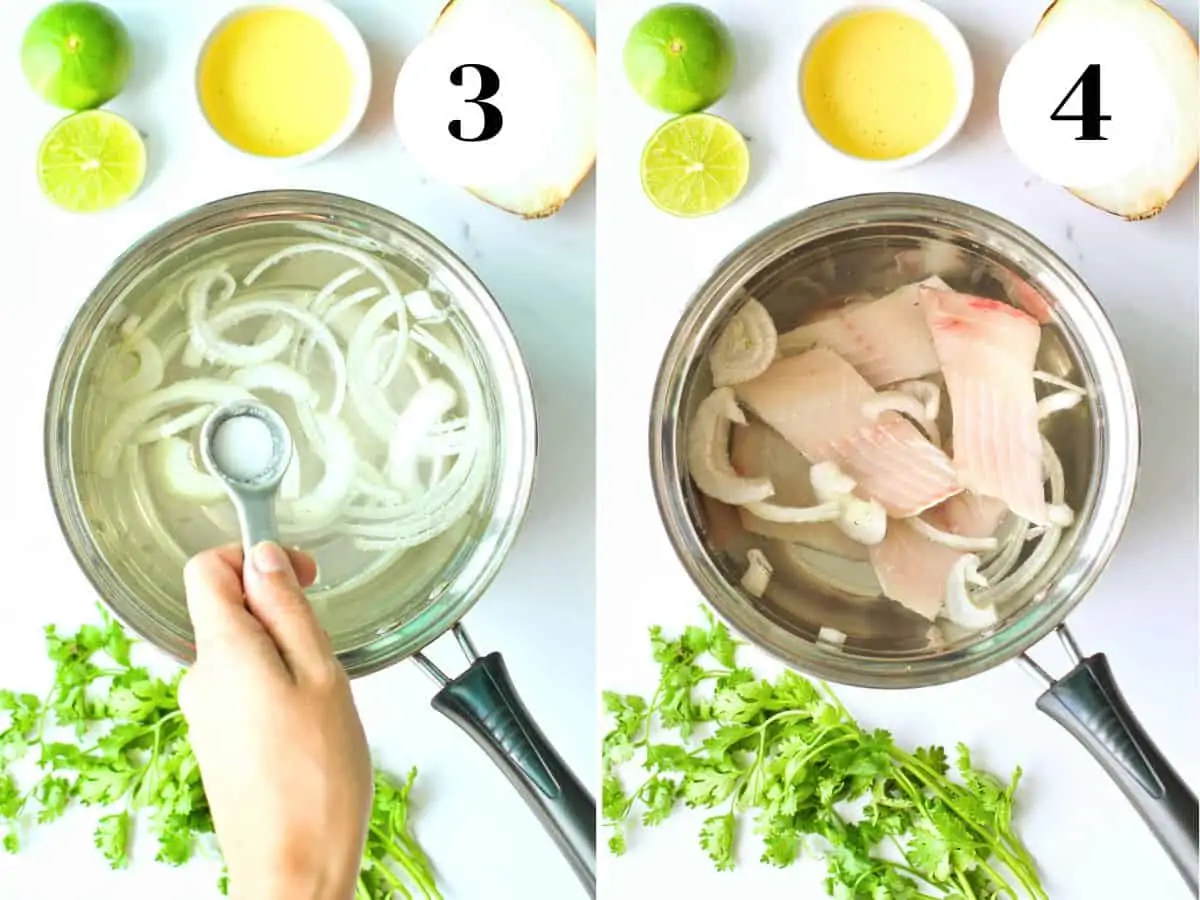
- Drain the water (or reserve for stock) and replace it with fresh water, add salt and sliced onions.
- Poach the squid, octopus, scallops or lobster (or combination) for 5 minutes. Remove the seafood with a slotted spoon, drain and cool at room temperature.
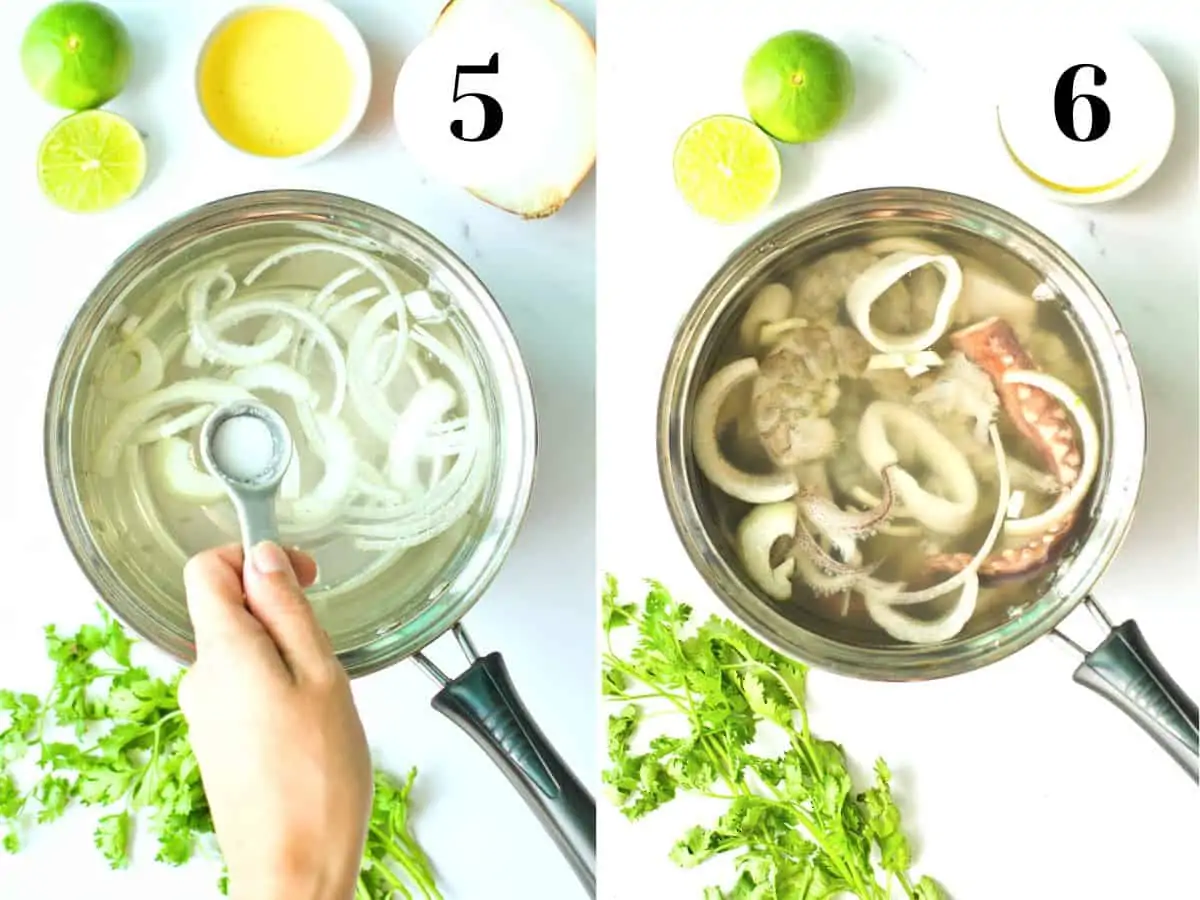
Pro Tip: You’ll be poaching the batches of seafood separately in the water with salt and onion. Cooking them in individual batches helps preserve the flavour of each type of seafood. Repeat the process for each mixture/batch.
- Drain the water (or reserve for stock) and replace with fresh water, add salt and sliced onions.
- Poach the mussels (clams or other shellfish) for 5 minutes. Discard any that don’t open. Remove the meat from the shells and cool at room temperature.
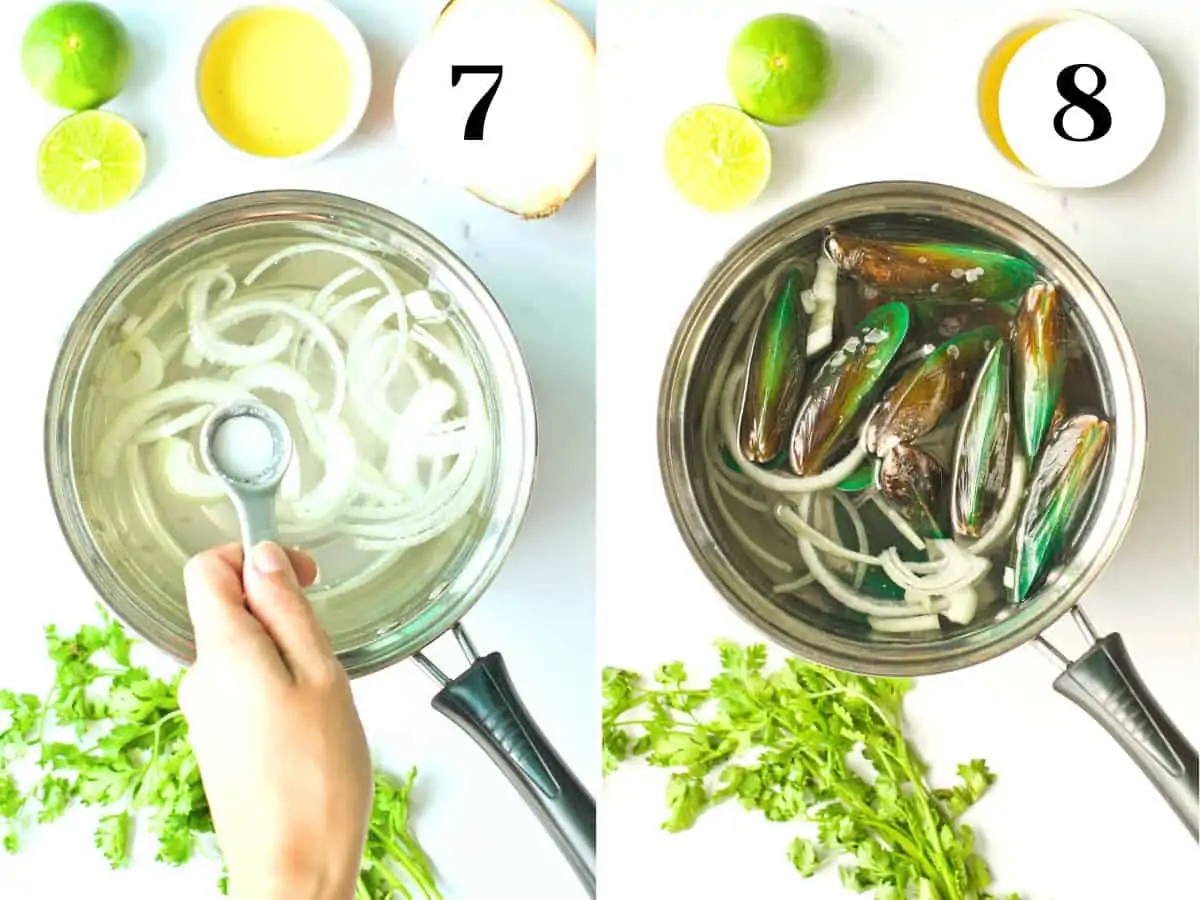
- Peel the cucumber, seed and dice into small pieces.
- Seed and dice the red and green bell peppers into small pieces.

- Whisk the freshly-squeezed lime juice, naranja agria (orange juice) and vegetable oil with salt in a large bowl.
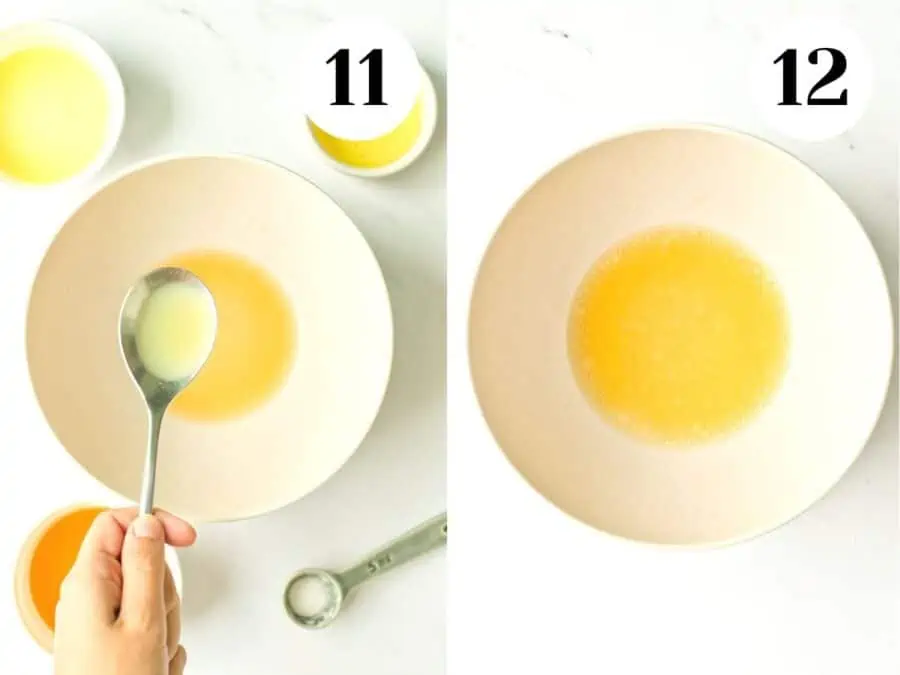
Pro Tip: It’s also possible to prepare the salad dressing in advance. Store in the refrigerator until ready to use.
- Chop the cooked, cooled seafood into medium-sized pieces. They should be in bite-sized. Leave the slices of squid rings and mussels whole if they’re not huge.
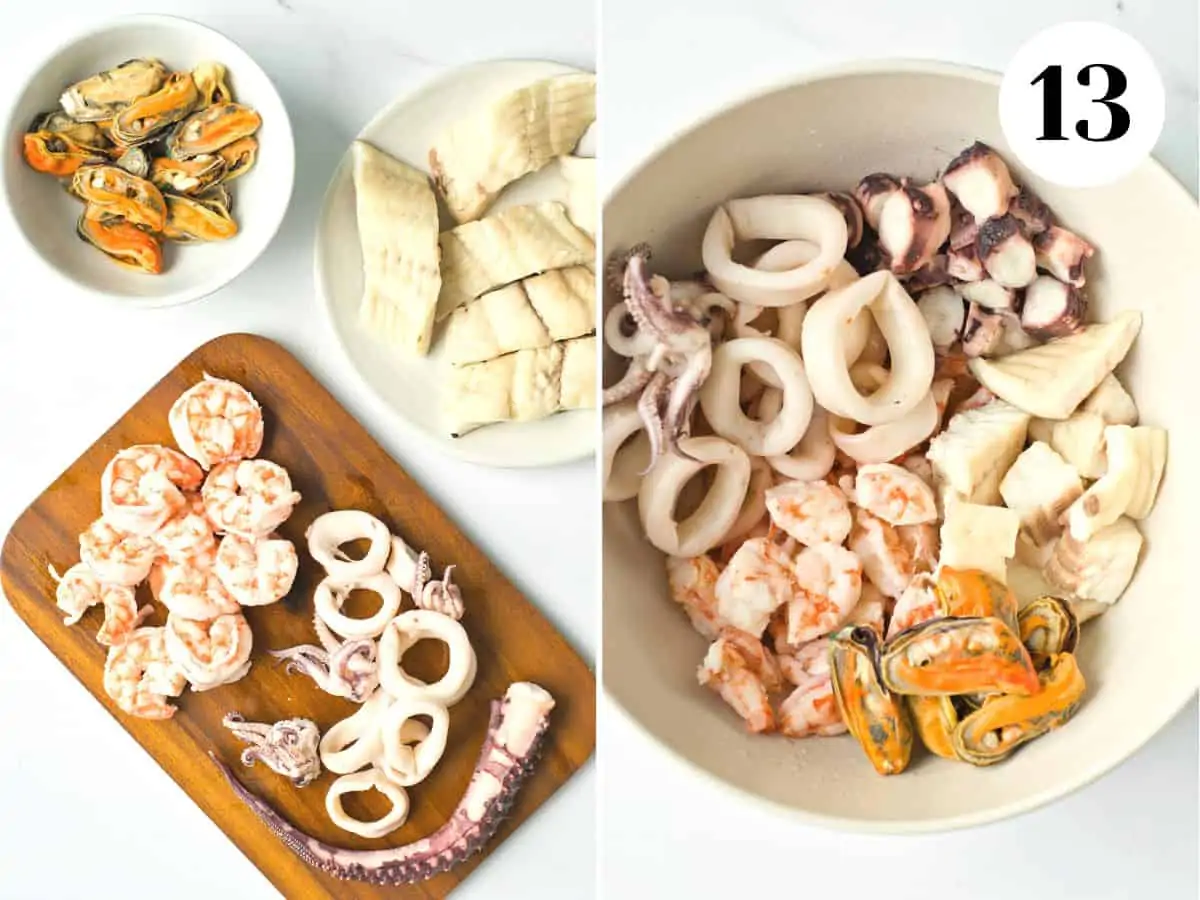
TOP TIP: Cook the seafood one day in advance and allow it to chill (covered) in the refrigerator until you’re ready to prepare the vegetables and dressing. Combine the seafood, vegetables and dressing, cover and return to the fridge to chill for an extra hour.
- Combine the chopped seafood and vegetables in a mixing bowl.
- Drain the reserved onion that’s been soaking in ice water and add to the bowl. Season with salt and pepper. Toss lightly.

- Chill covered in the refrigerator for a minimum of one hour. Adjust seasoning.
- Sprinkle the finished dish with more chopped cilantro. Serve with wedges of lime, if desired.
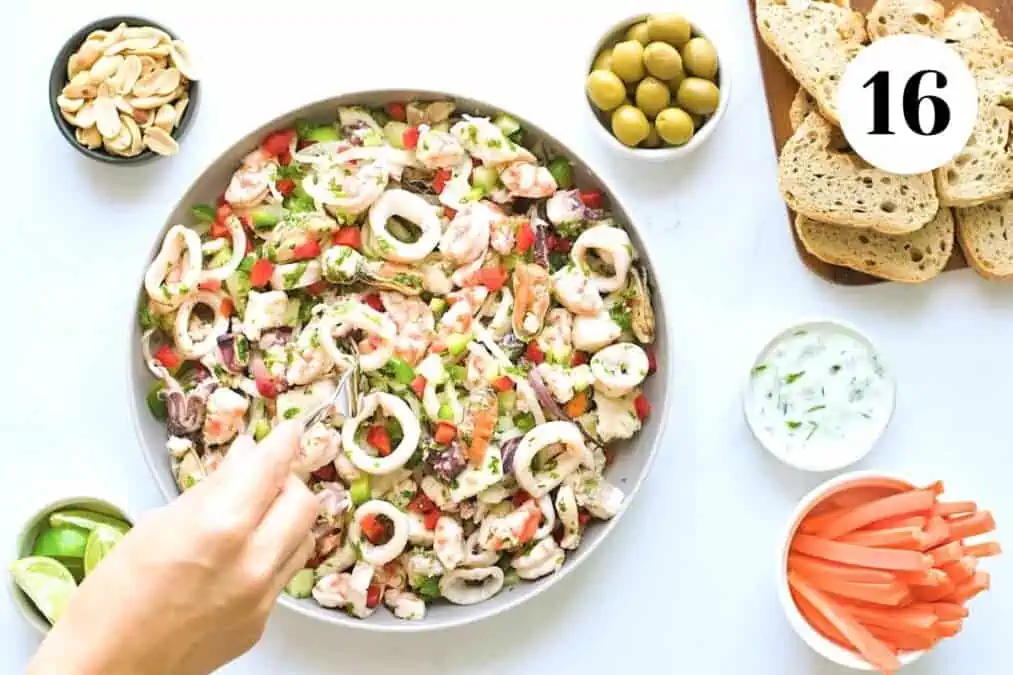
- Serve chilled in individual tapas dishes, with seafood forks and crostini or slices of baguette on the side.
Expert Tips and Serving Suggestions
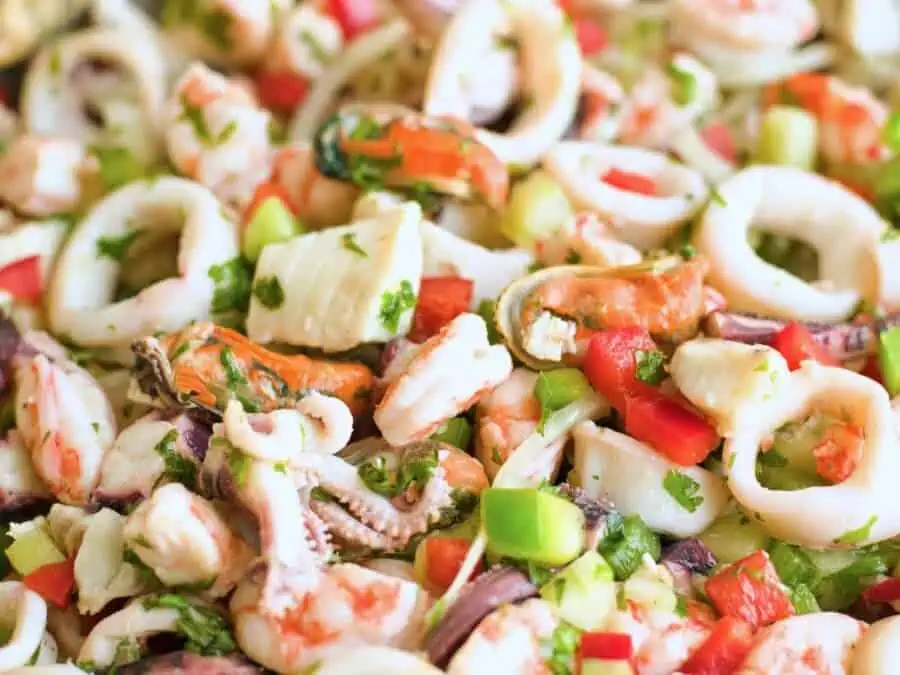
- Much of the magic of salpicón depends on chopping the ingredients in a variety of sizes. Vegetables should be diced into small pieces but the seafood should be cut into bite-sized pieces that are large enough so you can identify each type of seafood. This adds interest and texture to the dish.
- Use a sharp knife for the best results.
- To make Salpicón a la Gallego, the version that’s popular in Galicia, Spain, whisk a teaspoon of Spanish paprika into the vinaigrette.
- For salpicón de marisco Mexicano or Dominicano, add a minced, seeded jalapeño or serrano pepper into the salad for extra kick. I love to serve it with a bottled hot sauce such as Susie’s Habanero Sauce on the side.
- Enjoy as part of a tapas menu with glasses of Spanish Gin & Tonic, garnished with a slice of pink grapefruit.
- It also goes well with Manchego cheese, olives, tapas such as a sardine smoked salmon crostini and arroz verde, a fluffy spinach rice pilaf.
- Store leftovers covered in the refrigerator for up to 24 hours.
If you love the flavours of this dish you might also enjoy these other Spanish-inspired dishes, Spanish Chicken and Chorizo Stew and Bacalao a la Vizcaina (salt cod stew).
FAQs
Yes, you can! In Galicia, Spain seafood cocktails often feature just the catch of the day. And in Atlantic Canada, you can make a delicious salpicón de langosta during lobster season. Even scallops and fresh crab are good options for a salpicón.
A seafood salad is generally a healthier choice than a deep-fried, meat or cheese appetizer as it’s lower in calories, saturated fats and sodium. Fish is especially high in beneficial omega-3 fatty acids.
Examples of popular cold tapas include salpicón de mariscos (marinated seafood salad), gazpacho, slices of jamón Ibérico, patés and boquerones en vinagre (pickled anchoves). Spanish tortilla is another popular tapa but is served hot or at room temperature rather than chilled.
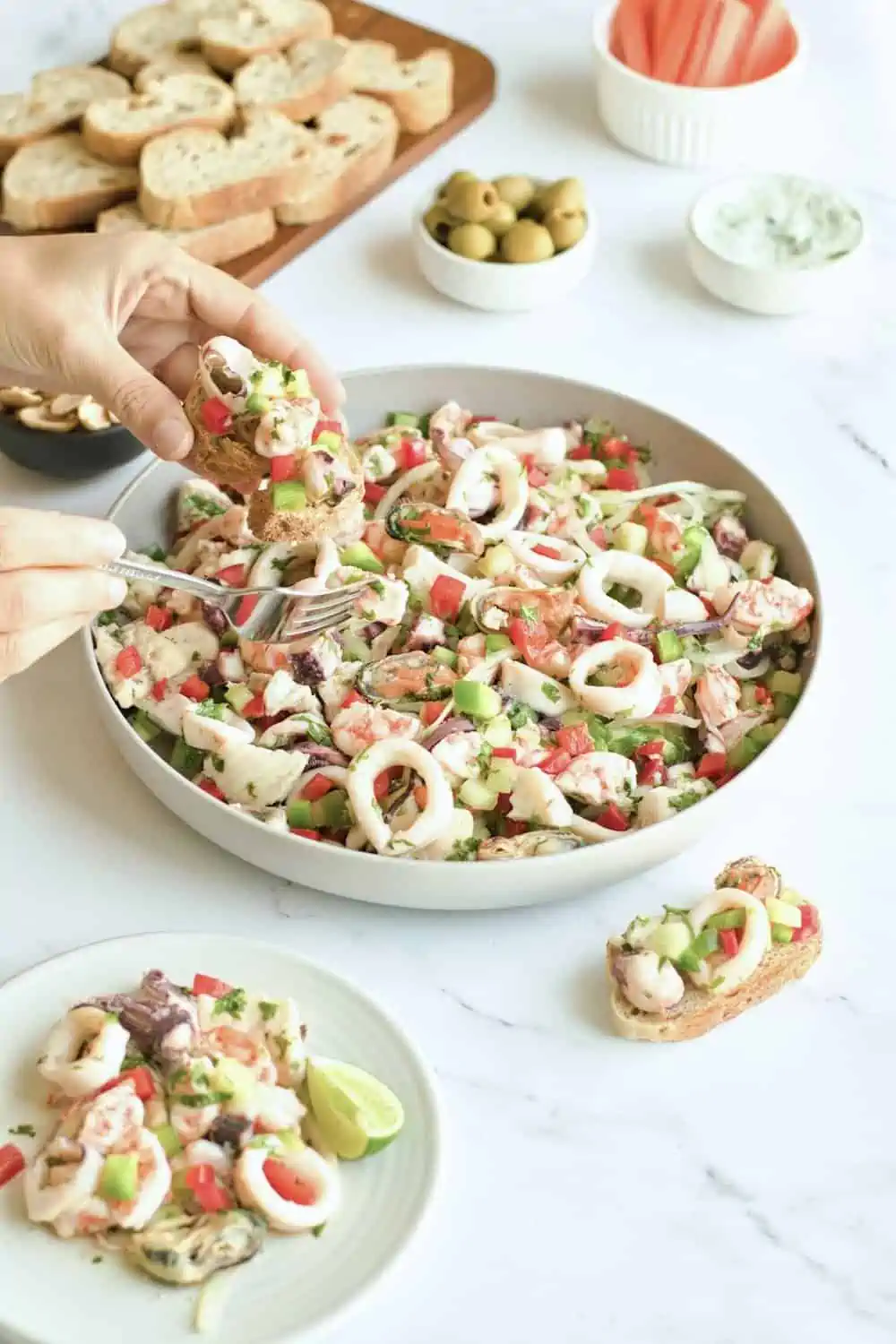
Other Fish and Seafood Appetizers to Try
Love this recipe? Please leave a 5-star 🌟🌟🌟🌟🌟rating and a comment in the recipe card below! I’d love to hear how it turned out in your kitchen! Thanks!
Recipe
Salpicón de Mariscos (Seafood Salad)
Equipment
- 1 Knife
- 1 Bowl
- 1 Medium Saucepan
Ingredients
- 1 white onion preferably Spanish
- ½ English cucumber peeled
- ½ red bell pepper seeded
- ½ green bell pepper seeded
- 12 oz filet of halibut or any firm, white fish
- 10 oz shrimp raw, peeled and deveined
- 10 oz squid (octopus or lobster or scallops) raw
- 12 oz mussels raw
- 2 Tablespoons lime juice fresh
- 1 Tablespoons naranja agria bitter orange juice ( or substitute grapefruit and orange juice in equal parts)
- 3 Tablespoons vegetable oil or light olive oil
- 2 Tablespoons cilantro finely chopped
- 1 tsp Sea salt
- 1/8 teaspoon Black pepper freshly ground
Instructions
- Clean and rinse the seafood. Remove any visible bones from the fish, trimming the "beards" off the mussels and discarding any shellfish that has opened.
- Peel and slice the onion thinly into slivers. Divide in half.
- Submerge one half of the sliced onions into a bowl of ice water. Reserve the remainder to use when poaching the batches of seafood.
- Place two cups of water in a saucepan and heat to boiling. Add one third of the reserved sliced onions and 1/8 teaspoon salt to the water. Add the fish filet to the skillet, reduce heat and poach for 3-5 minutes until done.
- Once the fish is cooked, remove it from the water with a slotted spoon and place on a separate dish to cool.
- Drain the water (or reserve for stock) and replace it with fresh water. Add salt and one third of the sliced onions and poach the squid, octopus, scallops or lobster (or combination of seafood you're using) for 5 minutes.
- Remove with a slotted spoon, drain and cool the seafood at room temperature.
- Drain the water (or reserve for stock) and replace it with fresh water. Add salt and the final third of the reserved sliced onions, cover and poach the mussels (clams or preferred shellfish ) for 5 minutes or until opened. Discard any that don't open.
- Remove the mussel meat from the shells. Cool at room temperature.
- Peel the cucumber, seed and dice into small pieces.
- Seed and dice the red and green peppers into small pieces.
- Whisk the freshly-squeezed lime juice, naranja agria (or a mixture of orange juice and grapefruit juice) and vegetable oil with remaining salt in a large bowl.
- Chop the cooked and room temperature fish and seafood into medium-sized pieces. They should be in bite-sized pieces but still recognizable. You can leave the squid rings whole if they're not too large.
- Add the seafood to the bowl along with the reserved slivered onions (drained from ice water) with the vinaigrette dressing. Add chopped cilantro and salt and pepper. Toss lightly.
- Cover and place in refrigerator to chill for at least an hour.
- Remove from the refrigerator. Adjust seasoning to taste.
- Serve chilled in individual tapas dishes, with seafood forks and crostini or slices of baguette on the side.
Notes
- Much of the magic of salpicón depends on chopping the ingredients in a variety of sizes. Vegetables are minced but the seafood should be cut into pieces that are bite-sized but still large enough that you can identify the shrimp, fish, clams etc. This adds interest and texture to the dish.
- Use a sharp knife for the best results.
- To make Salpicón a la Gallego, the version that’s popular in Galicia, Spain, whisk a teaspoon of Spanish paprika into the vinaigrette.
- For salpicón de mariscos Mexicano or Dominicano, add a minced, seeded jalapeño or serrano pepper into the salad for extra kick.
- Store leftovers covered in the refrigerator for up to 24 hours.
Nutrition
Save to Pinterest!
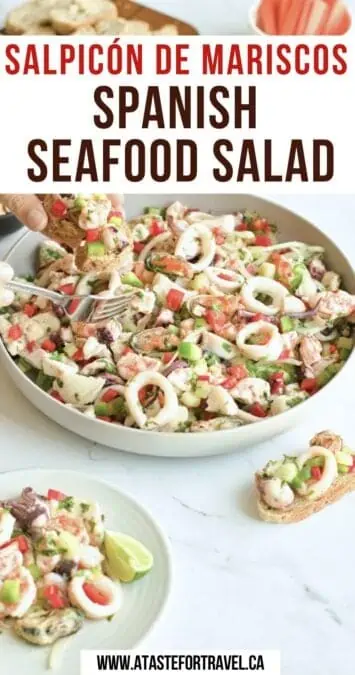


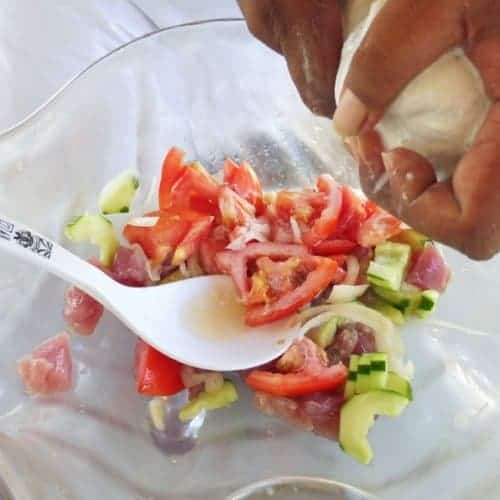
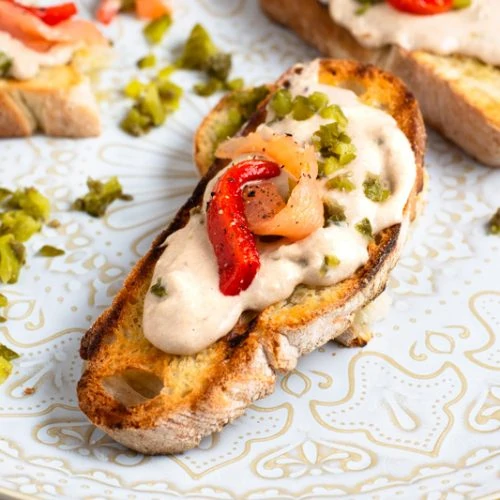
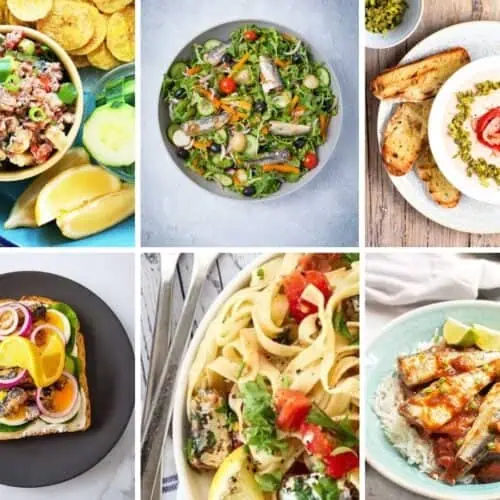
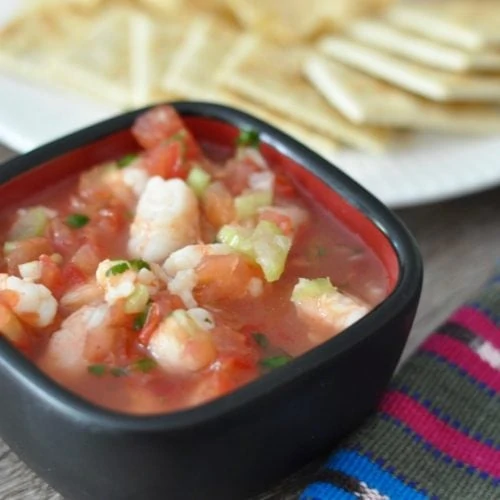
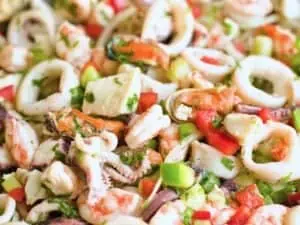
 Sopa de Albondigas (Meatball Soup)
Sopa de Albondigas (Meatball Soup)
Informatika
Is this seafood salad if you add sliced salmon?
Michele Peterson
A white fish is best for salpicon. For salmon I’d recommend the herbed sauce in our recipe for Cold Trout Platter.